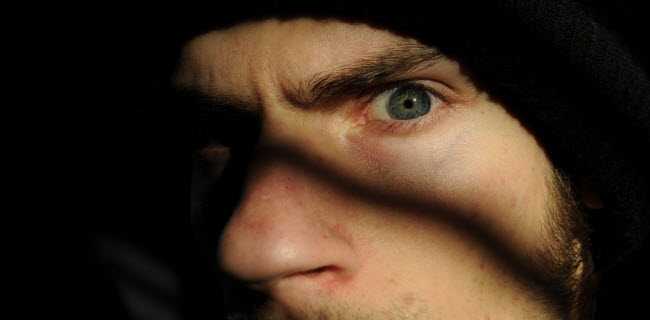Some stalkers are crazy. Others are obsessed. Regardless of what their motives may be, we can all agree that their actions are not based on things that you would consider normal. This only makes them more dangerous. Every year, stalkers victimize thousands of people. Some people report these incidents to the police, while others try to ignore them – hoping that the stalker will tire and simply stop (which rarely happens).
So what happens when stalking goes from something “innocent” to something more severe? The following are a few stories of people who were victims of stalking:
Dealing with a Crazy Stalker
David Letterman is a popular media icon, so it is not surprising to find that he has been the victim of stalkers – the most notable of whom was Margaret May Ray. Ray became famous when she was arrested driving Letterman’s car. Ray suffered from schizophrenia and believed that Letterman was her husband. She committed suicide in 1994, but before then, she broke into his house several times.
Letterman was fortunate that Ray wasn’t a violent stalker. It could so easily have been worse if she was. He also did the right thing by reporting the incidents of break-ins to the police, even though he sympathized with Ray.
The Lesson: Never underestimate the importance of your safety. If you’re being stalked, inform the police. As in the case of Letterman, the police can charge and arrest a stalker based on your complaints. It is also a bad idea to confront your stalker. It will just intensify the obsession and could make the stalker more violent.
Dealing with a Violent Stalker
Stalkers can get violent, and there is no better example than the case of Rebecca Schaeffer. Schaeffer was a child-star of the popular sitcom My Sister Sam. Her career looked promising, but in 1989, a stalker – Robert John Bardo – killed her.
Using a detective agency, Bardo tracked down Schaeffer’s address and shot her at the entrance of her home after she asked him to leave. Schaeffer died shortly before she got to the hospital. Her death drew a lot of public attention to the dangers of stalking. In fact, her case is credited with leading to the decision to initiate anti-stalking laws in the state of California.
Before he shot Schaeffer, Bardo visited her home twice within an hour. The first time, he rang her doorbell and asked for an autograph. The second time he rang, Schaeffer opened the door and politely asked him to leave—at which point, he whipped out his gun and shot her.
Another example of a violent stalking case is that of Theresa Saldana. Also an actress, she was brutally attacked by an obsessed fan who stabbed her close to a dozen times before a deliveryman who was nearby at the time overpowered him in 1982. Fortunately, Saldana didn’t die, but she spent months recovering from her wounds.
The Lesson: Schaeffer’s tragedy highlights the danger of confronting stalkers. It also shows why people should be more careful about opening their doors to strangers.
In addition to alerting the police, if you keep getting odd visits from the same person, you may want to install a few safety and security measures in your home. A private investigation agency can help you with this. For instance, adding an alarm system will help protect your house from break-ins, while installing a camera above your door will allow you see who is behind it without having to open the door.
Dealing with an Online Stalker
Stalking isn’t just restricted to physical confrontations like the situations above. It may also involve online confrontations – something Kourtney Reppert found out.
A popular California glamour model, Reppert had over 200,000 fans on Facebook alone. She also had a cyber stalker, a man identified as Luis Plascencia. After becoming a fan and getting her email address, Plascencia started sending threatening messages to Reppert with aggressive statements, such as, “I hope you die in an automobile accident and it crushes your ugly face through the windshield and a large piece of glass cuts your throat.”
In his messages, Plascencia also revealed that he knew her home address, names of her family members, and even the names of her friends. After four months, during which she received hundreds of threatening messages, Reppert reported the case to the law enforcement, and a few days later, Plascencia was arrested. He is currently facing a lengthy stay in prison.
The Lesson: Online stalkers have become even more popular with the growth of social media. The anonymity offered by the web allows them to stalk others and sometimes reinvent themselves. Be careful whom you let into your inner online social circle. Behind the profile of the cute 18-year-old whose “friend request” you accepted on Facebook could be a 48-year-old ex-con with a violent streak.
However, even though the Internet may appear to be the perfect way to hide your identity, it is still possible for law enforcement officers to track down cyber stalkers using their IP addresses and the tips they give off.
The best thing you can do to protect yourself against stalkers is to constantly be on your guard. Never take anything for granted. If you’ve bumped into the same person twice in a week, don’t think it’s serendipity. Take the cautious approach. Let the police know that you think you are being stalked and consider taking assertive actions of your own by working with a private agency.
Stalking is a crime—one with potentially fatal consequences. You have the right to protect yourself.




